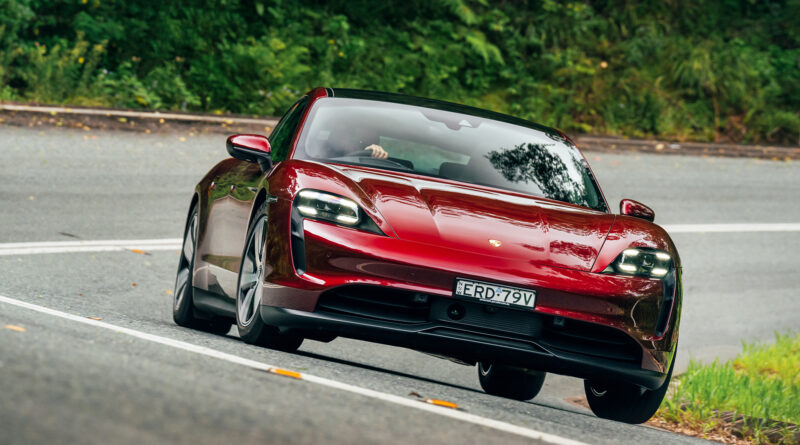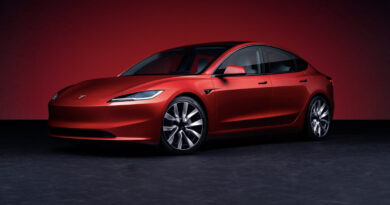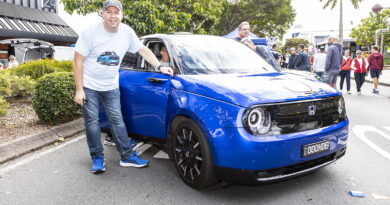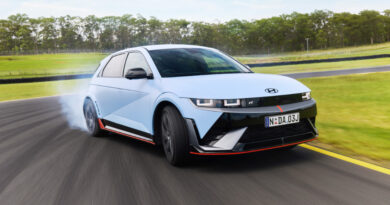Porsche Taycan RWD review
Australia’s third best-selling EV in 2021 and more units shifted than 911s last year, Porsche’s Taycan EV has been a runaway success.
The German firm’s first stab at an electric vehicle has been as superb as we suspected it would be, and now the line-up has been strengthened with the introduction of an entry level rear-wheel-drive model.
Simply dubbed ‘Taycan’ this single electric motor RWD EV also lowers the price of entry to $156,300 before on-road costs, meaning you can drive one away for roughly $175,000.
READ MORE: Seven-day Taycan RWD test: why ours ended up on a tow truck
It’s still a grand chunk of money, but you’re buying into so much of what already makes the Taycan superb: luxury, decent range, ultra-fast charging and Porsche’s know-how in producing a dynamically brilliant driving machine. It looks alright, too.
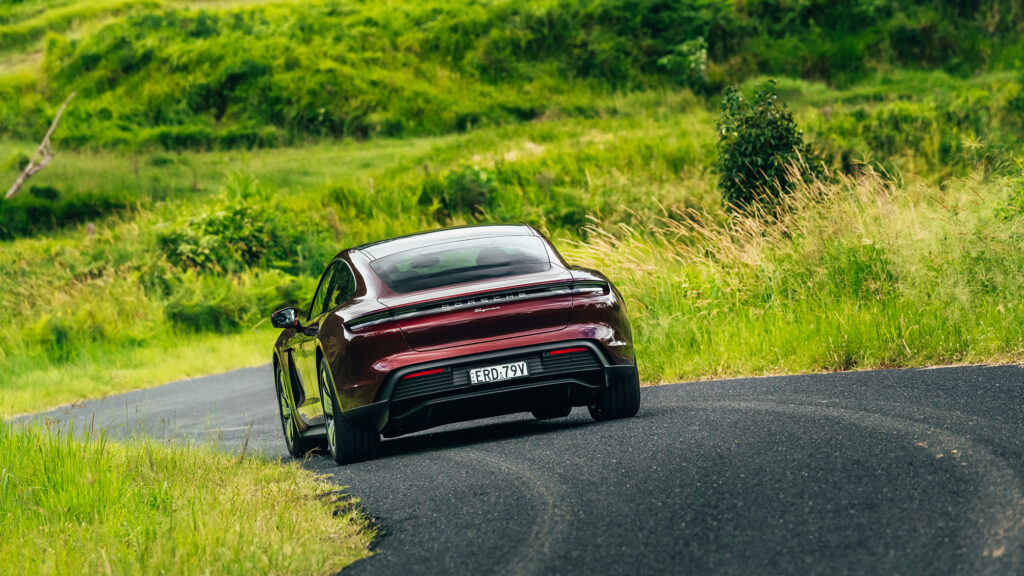
Value
The Taycan RWD may be twice the price of a Tesla Model 3 or Hyundai Ioniq 5, but it’s a cheap sporting Porsche and a cheap Taycan.
It’s some $40,000 under the next-rung-up Taycan sedan – the 4S – and almost $200k less than the brain-bendingly fast $345,800 Turbo S flagship.
If you want a four (or five) seat Porsche that’s not an SUV (thank God there are still purists out there) you’ll need $203,500 for a base Panamera and $241,200 to start shopping for 911s. Which, of course, is only a 2+2. Next to these, the RWD Taycan looks solid value.
You score the same 79.2kWh battery as the Taycan 4S (giving a decent 369km WLTP range) and, crucially, the same 800-volt electric drive system for rapid battery charging and grin-bringing performance.
Standard kit isn’t shabby with advanced safety aids, 14-way power seats, heated steering wheel, surround view cameras, head-up display and a home charging dock.
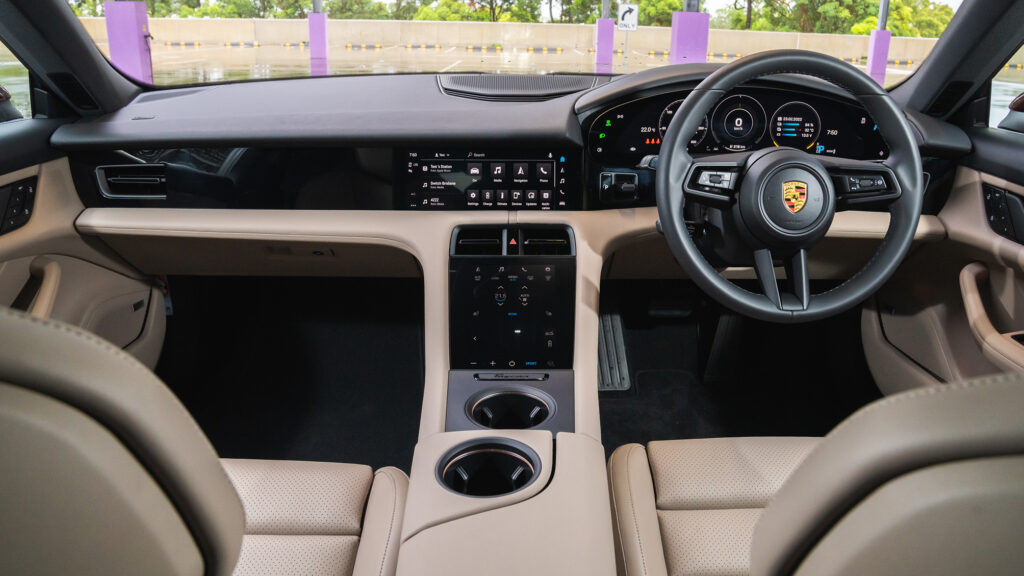
The graceful body sports LED headlights while expected inclusions at this price include 19-inch alloys, privacy glass, Porsche’s Comfort Access (keyless), two-zone climate control, digital radio and Porsche’s Communication Management with Porsche Connect. This means an embedded SIM card with internet access, online navigation, voice control, music streaming, Apple CarPlay and Android Auto.
What don’t you get? As with most Porsches, you can spend plenty if you want to option it up to the eyeballs, and some of this list really should be included as standard.
Seat heating is an extra $910 ($1820 if you want rear passenger bums toasty too), seat ventilation costs $2120 (front only), full leather interior (another $7540), ambient lighting ($890), Bose surround sound ($2840), fixed panoramic roof ($3370), metallic paint ($2300) and adding a third seat to the back row ($1000).
There’s also, frustratingly, no wireless phone charging.

Inside
You don’t suddenly slide into an economy rental car interior just because this is the cheapest Taycan. The sense of quality and decent touch points remains, and most of us can live without a carbon matte interior pack, Race-Tex roof lining and Bose amplifiers anyway.
Screens abound. A curved 16.8-inch driver display offers five different views, including an excellent screen-filling digital colour map dominating vitals like your digital speedo and electric range. A central 10.9-inch screen covers your infotainment and vehicle configurations, including the fitted Porsche Active Suspension Management to adjust damping. Yet another display shows battery information and climate control.
The setup with raked centre console is a minimalist designer’s fantasy, but I’d prefer a couple of knobs to quickly change climate. Air vent direction can also only be done through a screen, which really is technology for technology’s sake.
The RWD’s partial leather seats and sense of quality throughout reminds that Porsche doesn’t really do ‘entry-level’ – while a vast amount of electric steering wheel and seat adjustability means getting comfortable and into a purposeful position is fine for most body shapes, with memory settings saving your preference. Happily, you can sit low enough to feel properly cocooned in Porsche cockpit goodness. Squint and you could be in a 911. Really.
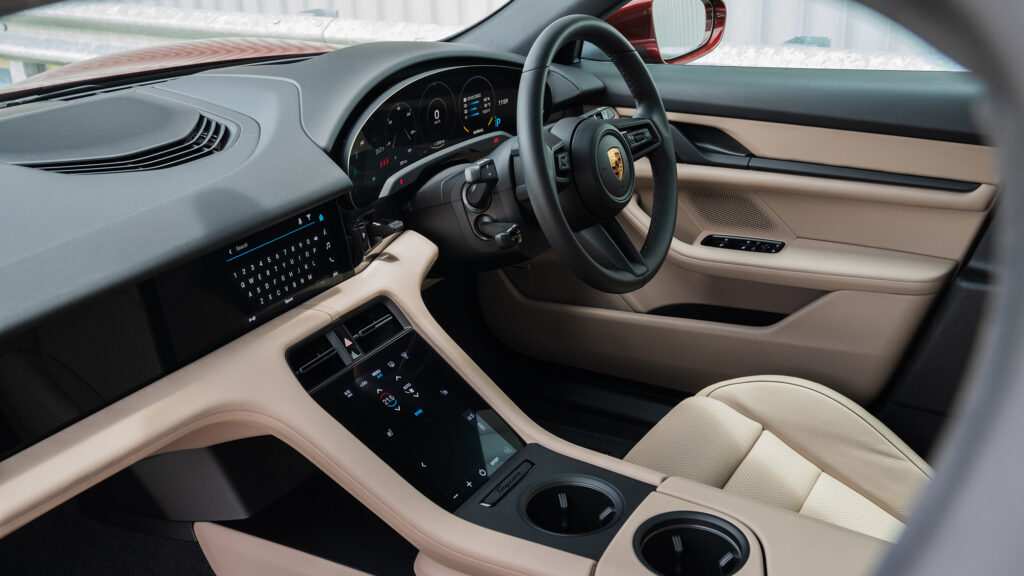
Rear seats have decent legroom and you sit low in bucket-type chairs so head room is fine unless you’re lumbered in the middle seat on a five-seat version. Viable family car? Absolutely.
Performance and efficiency
Porsche only had Taycan RWDs featuring the Performance Battery Plus available for the launch drive. This $12,020 option lifts maximum power from 240kW to 280kW (300kW/350kW with overboost using launch control) and torque from 345Nm to 357Nm. Regardless of battery your 0-100km/h time is 5.4 seconds, the extra battery weight cancelling out the power gain.
Unlike other Taycans the RWD has just a single electric motor – at the back axle – making it the sole rear-wheel-drive variant in the range.
Good news is it shares the others’ 800-volt electric drive system, helping fast recharging, decent range and performance enough to merit the Porsche badge.
But is the performance enough? It depends what you demand from a Porsche sports car, electric or otherwise. Despite its 2050kg mass (2130kg with the longer range battery) the Taycan RWD zips away with enough sporting zest to satisfy most urges. Yes, it’s an absolute world away from the Taycan Turbo S’s ridiculous 2.8 second dash to 100km/h, but you’ll have to trust me, this neck-snapping acceleration soon becomes a rollercoaster you want to get off.
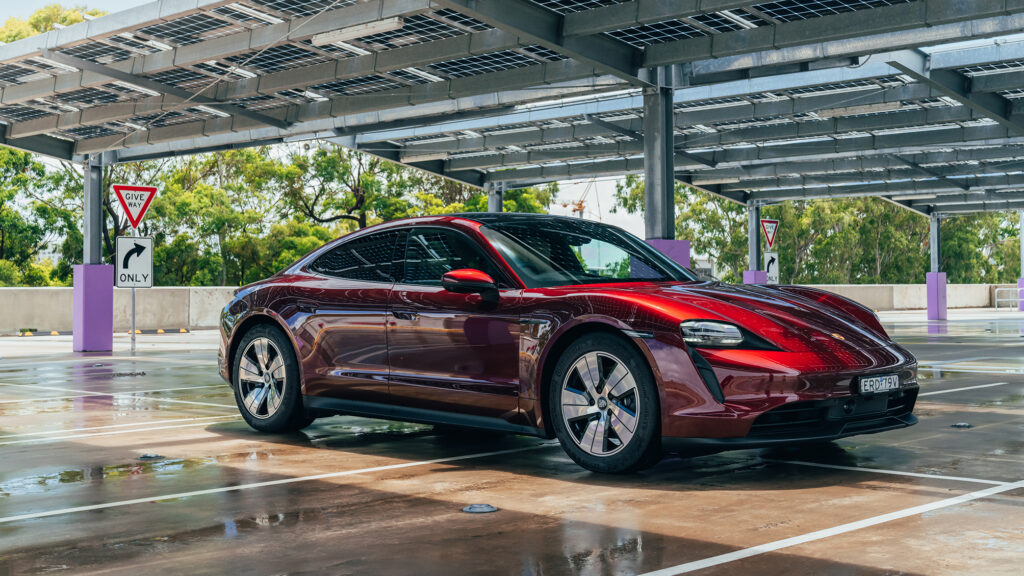
The Taycan RWD’s speed feels more mature than terrifying, but sling it in Sport mode (Sport Plus comes only with optional Sport Chrono Package at $2340) and throttle response and suspension tighten up and it’ll happily surge between corners in confident silence. It won’t pin your head to your seat and leave you speechless, but it’s good to know there’s other Taycans available should you need this.
Porsche seems to undercook its efficiency figures. The official use is 26.2kWh/100km, but we managed 22.0kWh/100km on our route, including some enthusiastic sections through the Sunshine Coast hinterland.
Charging
As standard, Porsche provides a Mode 3 charging cable for AC public charging stations, and a 150kW on-board DC charger for use at 400 volt charging points.
There are charge ports either side of the Taycan for AC or DC charging.
Quoted charge time for AC with 11kW is eight hours from 0-100%, or nine hours with the larger battery. The 50kW public chargers are a bit tardy for the Taycan, offering 5-80% charge in 93 minutes. Find a 350kW charger and the job drops as low as 22.5 minutes for the same fill, the maximum charge capacity being 270kW with the larger battery.
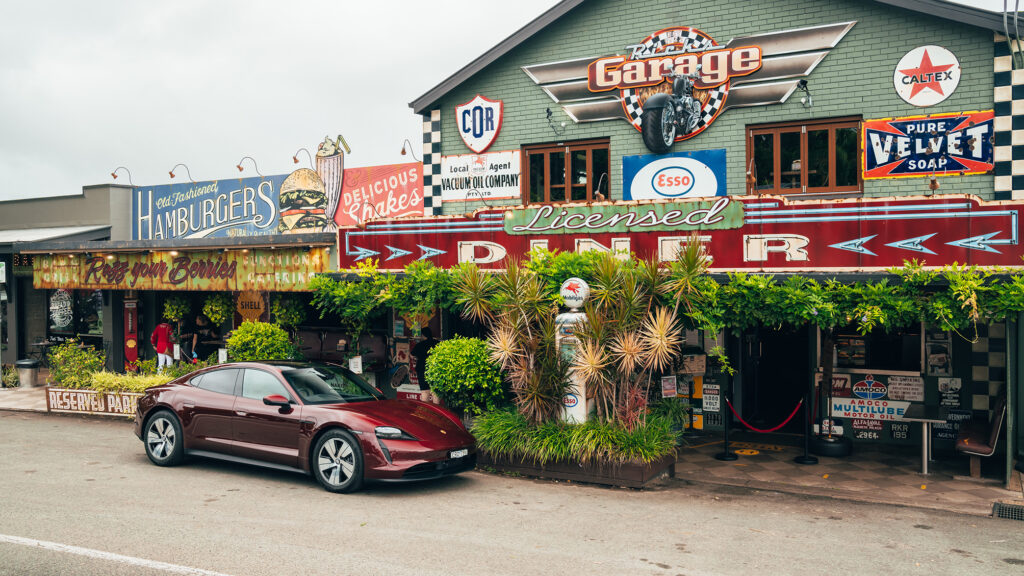
As standard, Porsche provides a three-year free subscription to the Chargefox public charging network.
Unlike some EVs, when you lift off the throttle the Taycan coasts rather than drops anchor to harvest energy to the battery. You won’t be driving this EV with one pedal. Plenty of energy is recovered through braking, but the brakes themselves won’t feel as sharp as those used to driving proper, lighter-weight sporting Porsches.
Ride and handling
You ride on steel coil springs, unlike the air suspension in every other Taycan. It’s a cost option on the RWD ($4540) if you insist, but after hundreds of kilometres on some often goat track-like surfaces, the standard setup does a more than acceptable job of mopping up bumps. Used as a highway grand tourer in Normal mode it cruises magnificently, impressively suppressing most outside noise and silently wafting along in controlled comfort.
Purists will warm to the rear-drive layout of this Taycan. With some 90kg less bulk than the Taycan 4S – and most of that weight coming out of the front – it feels a mite more sharp turning into corners.
All Taycans sit impressively flat, keen and controlled through the twisties, defying their two-tonne plus mass, but for me this lightest version feels the most playful. It can’t deliver in the same way a svelte little Boxster or Cayman does, but steering feel – heavy though it is – and handling genius feel familiar and rewardingly Porsche. It’s a very different drive experience to any ICE Porsche, but deeply impressive. Little wonder many Taycan owners, Porsche Australia says, have something 911-shaped in the garage too.
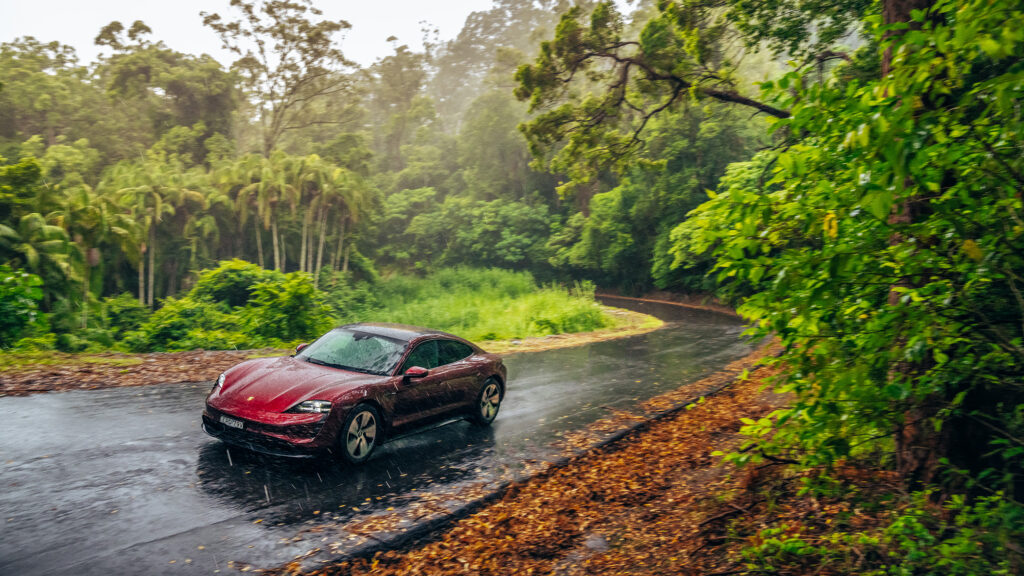
If anything lets the side down it’s the RWD’s Continental Premium Contact 6 rubber over its 19-inch wheels. They ran out of grip when really pushed, and chirped aplenty when asking the big Taycan to quickly change direction on a roundabout. Porsche Australia said there’s no set-in-stone tyre for the Taycan RWD as yet due to availability. I’d negotiate with the Porsche dealer for the best set of performance rubber they’ll provide.
Above all, the drive is effortless. It’s not outright exhilarating – acceleration aside, few EVs are – but the control, ease and incredible control brings a different kind of driving joy.
Party tricks
Launch control is pretty good fun and allows for a beautifully controlled, rapid enough standing start. You’re gifted an overboost function for 2.5 seconds, supplying the electric motor with 300kW the normal battery and 350kW the larger one.
If you fancy dropping an extra $1050 (yep, more extras) you can have Porsche’s Electric Sport Sound. Nothing so cheaty as the noise of a nice naturally aspirated high revving six-cylinder, but something more akin to a spaceship’s whirr. Porsche says the sound is more “emotionally charged and richer,” but then your alternative is really just silence.
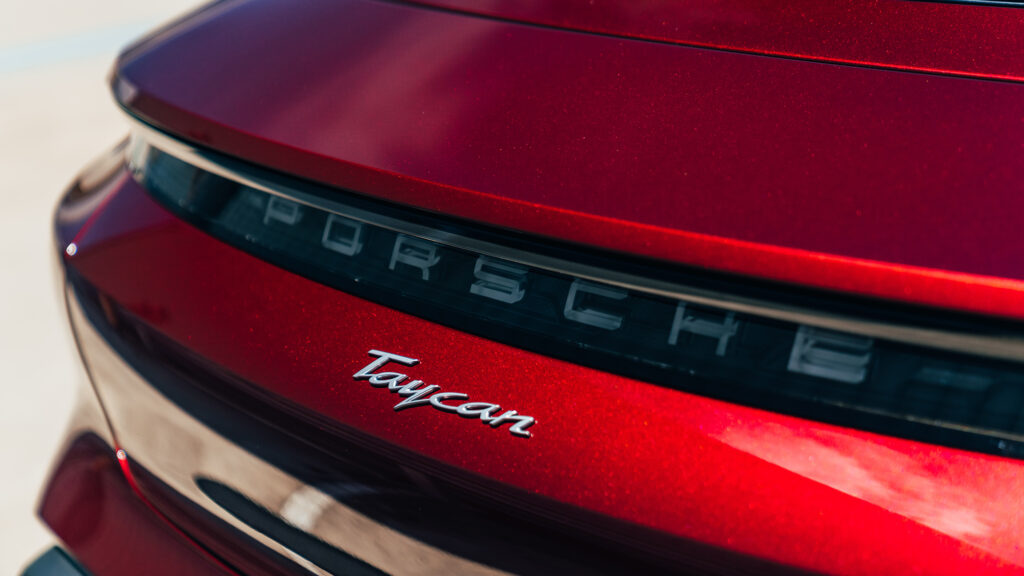
Safety
No skimping on safety and driver assistance just because it’s entry-level. You get the same gear as a Taycan costing $200,000 more.
There’s radar cruise control as standard while Traffic Jam Assist steers, accelerates and brakes for you up to 60km/h.
Also included are Lane Change Assist, Lane Keeping Assist, auto emergency braking, front and rear parking sensors, cross road assist and ten airbags.
There’s a surround view camera showing two different angles as you park. It deliberately distorts the image, presumably to make parking more accurate, but takes some serious getting used to.
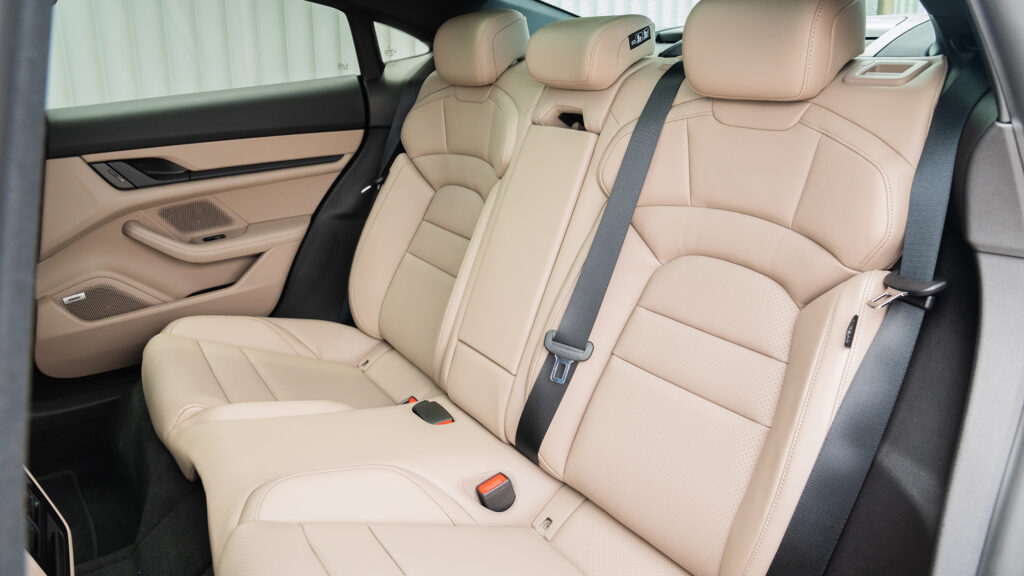
Verdict
There’s next to no disadvantage buying the cheapest Taycan in the range. For some, myself included, it’s probably my pick from the bunch. You still get the killer good looks, rapid fast charging, decent range and wow factor interior and really only miss the exhilaration of barmy acceleration. If you find 5.4-seconds to 100km/h enough – and if you’re not a regular track day hero it really should be – you’ll be more than satisfied and more likely to keep hold of your licence.
You also get the lightest car in the range, the rewarding feel of rear wheel drive and it uses less energy than any other Taycan. You miss out on air suspension, but the ride on steel coil springs is peachy for those used to sporty cars.
Biggest challenge is not going nuts on the optional extras – our tester added nearly $40,000 worth. With a few well chosen options you should be on the road for around $180,000. Still a lot of coin, but bloody good value for a proper four seater Porsche with this performance, dynamic brilliance, technology and style.
Many believe Porsche’s entry-level 911 Carrera is the best all-rounder in its range, and I’d happily have a pub argument – with anyone who’d listen – that the same could be said of the Taycan RWD too.
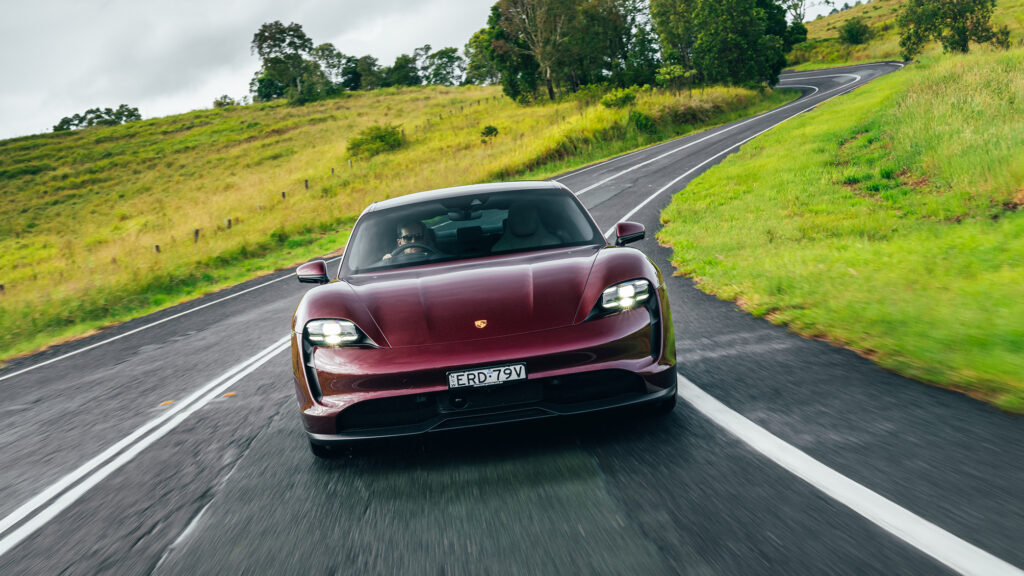
Porsche Tacan RWD
Price: $156,300 plus on-road costs ($194,800 plus o.r.c. as tested)
Basics: EV, 4 or 5 seats, 5 doors, sedan, RWD
Range: 369km (WLTP) or 434km with Performance Battery Plus
Battery capacity: 72.6kWh or 93.4kWh ($12,020 option)
Warranty: 3 years/unlimited km
Battery warranty: 8 years/160,000km
Energy consumption: 26.2kWh/100km (22.0kWh/100km as tested)
Motor: 1 rear 240kW/345Nm (300kW/345Nm with launch control overboost). With Performance Battery Plus, 280kW/357Nm (350kW/357Nm with overboost)
AC charging: 11kW, Type 2 plug
DC charging: 270kW, CCS combo plug
0-100km/h: 5.4 seconds

